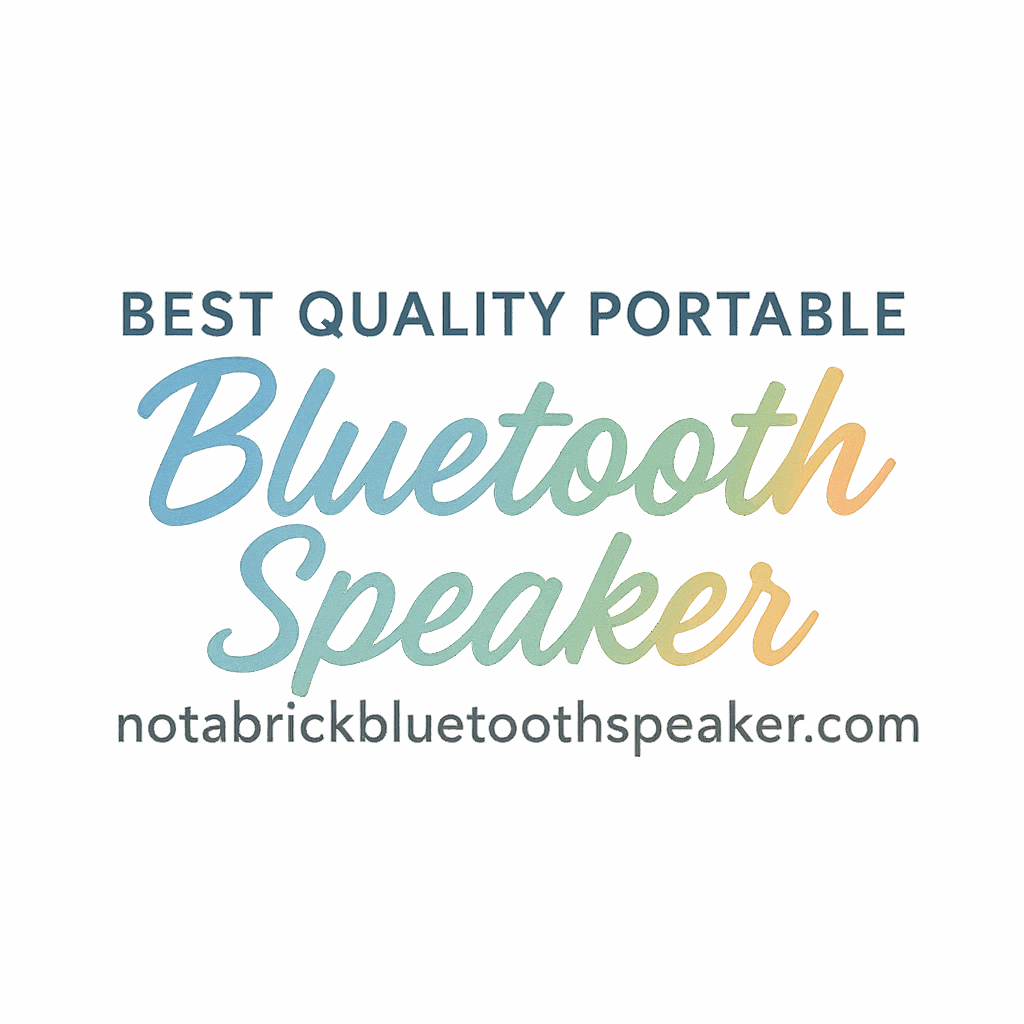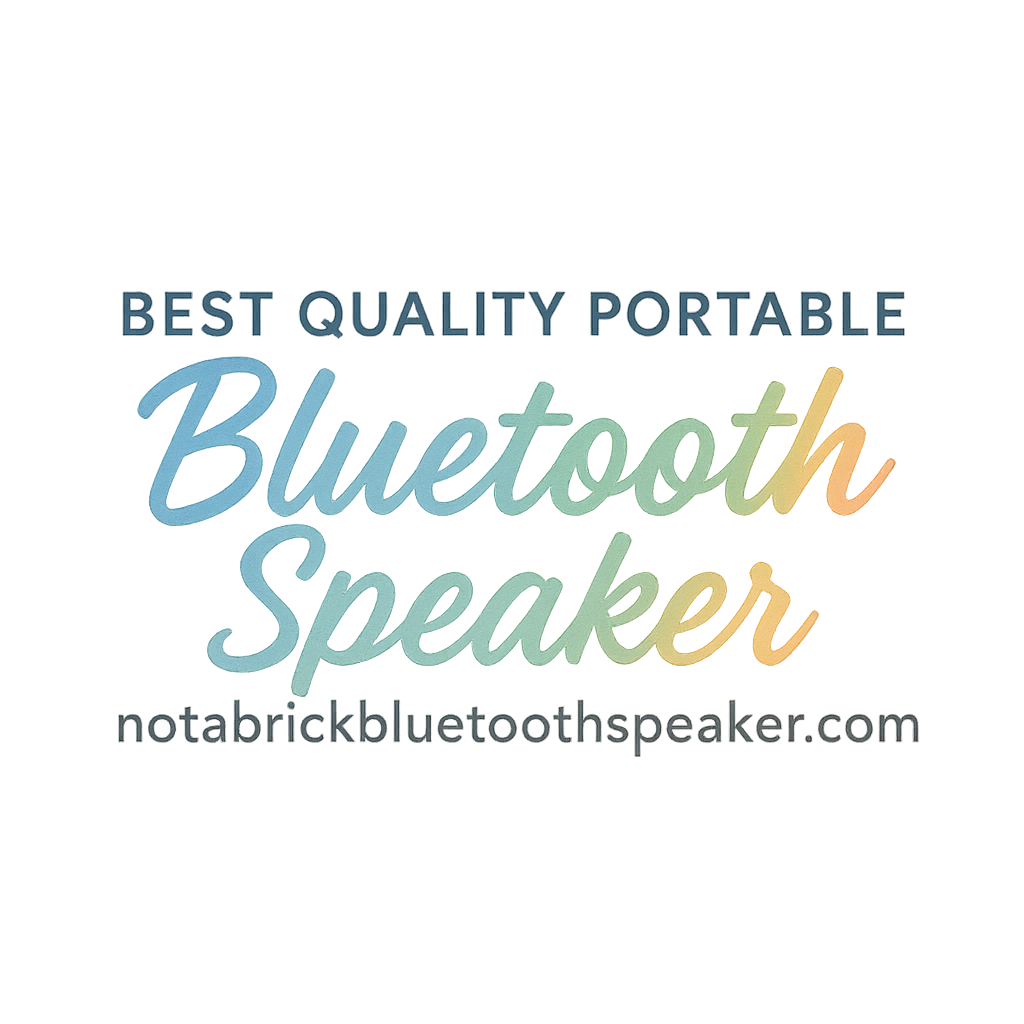Introduction: Why Technology Matters in Bluetooth Speakers
So you’re thinking of buying a Bluetooth speaker, or maybe upgrading your current one? Great idea! But here’s a question you should ask yourself: What makes one speaker better than another? Spoiler alert—it’s not just about brand names or how cool it looks.
Behind every great Bluetooth speaker is a set of smart, innovative technologies that directly affect how it sounds, how long it lasts, and how easy it is to use. In this post, we’re breaking down 7 Bluetooth speaker technologies that truly matter—whether you’re jamming in your room or partying on a beach.
Ready to nerd out (in a fun way)? Let’s go!
1. Bluetooth Version and Connectivity Protocols
Evolution from Bluetooth 2.1 to 5.4
Bluetooth has come a long way. Early versions were slow and not very stable. Fast forward to Bluetooth 5.4, and you’re looking at faster speeds, longer ranges, and better stability. This means fewer dropped connections and better syncing with your phone or tablet.
Older versions like 2.1 or 3.0? They’re practically antiques. Today’s top speakers run on Bluetooth 5.0 and above—so always check before you buy.
What’s the Difference Between Codecs Like SBC, AAC, and aptX?
This is where things get juicy. Codecs are what convert digital data into sound. SBC is the basic one—meh. AAC gives you slightly better sound (especially with Apple devices). But if you want crisp, CD-like quality with minimal lag, look for aptX or aptX HD.
The newer LC3 codec (used with Bluetooth LE Audio) is starting to roll out. It gives superior sound with less battery use. Yes, please!
Explore More About Connection
Want to deep dive into pairing issues, lag, or wireless range fixes? We’ve got you covered over at our Connection section.
2. Audio Codecs and Sound Processing Chips
How Codecs Affect Sound Quality
Imagine listening to music with a thick blanket over your ears. That’s SBC for you. Now rip that blanket off—that’s aptX in action. The right codec helps preserve all those delicious details in your music.
DSP (Digital Signal Processing): The Secret Sauce
Every beat drop, every thump of the bass—it’s all optimized in real-time by a Digital Signal Processor (DSP). This microchip tweaks your audio to adjust for volume, speaker size, and even room acoustics.
It’s like having a sound engineer inside your speaker.
Read More on Sound Tips
From EQ adjustments to placement tricks, our Sound Tips page is gold for audio geeks.
3. Battery Technology and Power Management
Battery Life vs. Charging Time
Some speakers boast 24-hour battery life, but if it takes 10 hours to charge—what’s the point? Lithium-ion batteries with fast-charging features are the sweet spot.
Look for USB-C charging ports and smart battery monitoring that prevents overcharging. It’s like eco-conscious tech for your tunes.
Smart Power Management: Efficiency is Everything
Today’s Bluetooth speakers are smart enough to shut down unused features or go into sleep mode when idle. That’s energy saving and convenience.
More on Long-Lasting Batteries
Check out our in-depth guides on Long-Lasting speakers that go the distance.
4. Acoustic Design and Driver Technology
What Makes A Speaker Sound Rich and Full?
It’s all about the drivers, baby. A good speaker has multiple drivers—tweeters for highs, woofers for bass, and midrange cones for vocals. The better the design, the richer the sound.
Passive Radiators vs. Subwoofers
Want booming bass without a massive box? Passive radiators vibrate with the air inside the speaker, mimicking the function of a subwoofer. Some high-end models even have dual passive radiators for a serious punch.
Dig Deeper into Acoustics
We cover acoustic design, speaker materials, and airflow science over on our Acoustics section.

5. Waterproofing and Durability Innovations
IP Ratings Explained
IPX4? Splash-proof. IP67? Waterproof and dustproof. That number actually matters more than you think. Going to the beach or camping? Don’t settle for less than IP67.
Rugged Design for Outdoor Adventures
Modern Bluetooth speakers feature rubberized exteriors, shock-proof enclosures, and sealed ports—perfect for real-world messes.
Tips for Care and Maintenance**
Want to make your speaker last longer? Visit our Care tag for speaker cleaning hacks and storage advice.
6. Smart Features and Voice Assistant Integration
Alexa, Siri, and Google Assistant in Speakers
Many Bluetooth speakers now double as smart assistants. You can ask for the weather, set alarms, or control your smart lights—all through your speaker.
Just say, “Hey Google, play my BBQ playlist,” and let the party begin.
Connectivity with Smart Home Ecosystems
Some speakers support multi-platform sync, letting you control music across Alexa, Google, and Apple Home simultaneously.
Learn More About Technology in Smart Speakers
Explore cutting-edge innovations in our Technology hub.
7. Multi-Speaker Pairing and Stereo Technology
True Wireless Stereo (TWS) vs. PartyBoost and JBL Connect+
Want bigger sound? Pair two or more speakers! TWS gives you left-right stereo separation, while PartyBoost and Connect+ are brand-specific methods to sync up multiple speakers for whole-house audio.
Why Stereo Still Matters
Mono is fine—but stereo gives depth. It’s like watching a movie in 3D instead of black and white.
Go to Pairing for Troubleshooting Tips
Having pairing issues? Visit our Pairing page for easy fixes.
Bonus: What’s Coming Next in Bluetooth Speaker Tech
AI Audio Tuning & Machine Learning
The future? Self-tuning speakers. Using built-in microphones, speakers will adapt in real time based on your room and how loud you’re listening.
LE Audio and LC3 Codec – The Future of Wireless Sound
Bluetooth LE Audio is lighter on power, offers better audio via the LC3 codec, and supports multiple audio streams. It’s like the next-gen of wireless sound.
How to Choose the Right Bluetooth Speaker for Your Needs
Need help deciding?
- Check out our curated Buying Guides
- Compare top-rated models in our Comparison Reviews
- Don’t forget to read up on Features & Specs
Conclusion: The Technology Behind the Tunes
Bluetooth speakers aren’t just portable boxes of sound—they’re mini marvels of modern engineering. From audio codecs to smart assistants, from rugged design to stereo pairing, all these technologies come together to shape your listening experience.
Next time you shop for one, don’t just go for looks. Look under the hood. Because now, you know what matters.
FAQs
1. What Bluetooth version should I look for in a speaker?
At least Bluetooth 5.0 or above for faster pairing, better range, and improved battery life.
2. Is aptX really better than SBC or AAC?
Yes! aptX (especially aptX HD) offers much better sound clarity and less delay.
3. How do I know if a speaker is waterproof?
Look at the IP rating. IP67 means it’s waterproof and dustproof—ideal for outdoor use.
4. Can I pair two different brands of Bluetooth speakers?
Usually not. Pairing features like TWS or PartyBoost are brand-specific.
5. How long should a good speaker battery last?
Anywhere from 10 to 24 hours on a full charge, depending on usage and volume levels.
6. Are voice assistants on Bluetooth speakers reliable?
They’re getting smarter every year. For best performance, go with speakers designed for smart home integration.
7. Where can I learn more about fixing connection issues?
Check out our full guide on Bluetooth Fixes for expert troubleshooting.


